Mohsin Raza
An Overlooked Role of Context-Sensitive Dendrites
Aug 20, 2024Abstract:To date, most dendritic studies have predominantly focused on the apical zone of pyramidal two-point neurons (TPNs) receiving only feedback (FB) connections from higher perceptual layers and using them for learning. Recent cellular neurophysiology and computational neuroscience studies suggests that the apical input (context), coming from feedback and lateral connections, is multifaceted and far more diverse, with greater implications for ongoing learning and processing in the brain than previously realized. In addition to the FB, the apical tuft receives signals from neighboring cells of the same network as proximal (P) context, other parts of the brain as distal (D) context, and overall coherent information across the network as universal (U) context. The integrated context (C) amplifies and suppresses the transmission of coherent and conflicting feedforward (FF) signals, respectively. Specifically, we show that complex context-sensitive (CS)-TPNs flexibly integrate C moment-by-moment with the FF somatic current at the soma such that the somatic current is amplified when both feedforward (FF) and C are coherent; otherwise, it is attenuated. This generates the event only when the FF and C currents are coherent, which is then translated into a singlet or a burst based on the FB information. Spiking simulation results show that this flexible integration of somatic and contextual currents enables the propagation of more coherent signals (bursts), making learning faster with fewer neurons. Similar behavior is observed when this functioning is used in conventional artificial networks, where orders of magnitude fewer neurons are required to process vast amounts of heterogeneous real-world audio-visual (AV) data trained using backpropagation (BP). The computational findings presented here demonstrate the universality of CS-TPNs, suggesting a dendritic narrative that was previously overlooked.
Cooperation Is All You Need
May 16, 2023Abstract:Going beyond 'dendritic democracy', we introduce a 'democracy of local processors', termed Cooperator. Here we compare their capabilities when used in permutation-invariant neural networks for reinforcement learning (RL), with machine learning algorithms based on Transformers, such as ChatGPT. Transformers are based on the long-standing conception of integrate-and-fire 'point' neurons, whereas Cooperator is inspired by recent neurobiological breakthroughs suggesting that the cellular foundations of mental life depend on context-sensitive pyramidal neurons in the neocortex which have two functionally distinct points. We show that when used for RL, an algorithm based on Cooperator learns far quicker than that based on Transformer, even while having the same number of parameters.
Multimodal Speech Enhancement Using Burst Propagation
Sep 07, 2022
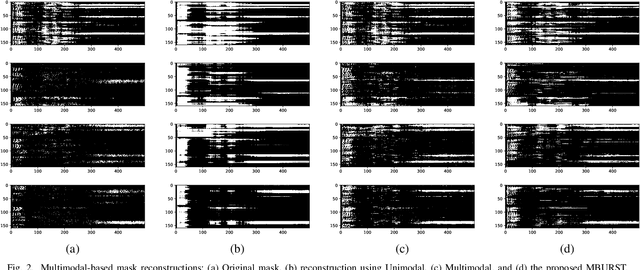
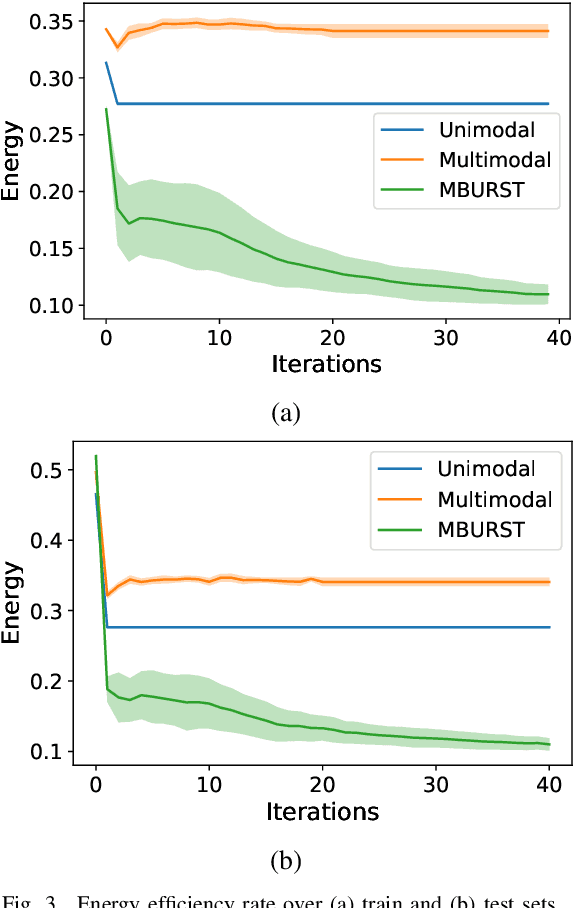

Abstract:This paper proposes the MBURST, a novel multimodal solution for audio-visual speech enhancements that consider the most recent neurological discoveries regarding pyramidal cells of the prefrontal cortex and other brain regions. The so-called burst propagation implements several criteria to address the credit assignment problem in a more biologically plausible manner: steering the sign and magnitude of plasticity through feedback, multiplexing the feedback and feedforward information across layers through different weight connections, approximating feedback and feedforward connections, and linearizing the feedback signals. MBURST benefits from such capabilities to learn correlations between the noisy signal and the visual stimuli, thus attributing meaning to the speech by amplifying relevant information and suppressing noise. Experiments conducted over a Grid Corpus and CHiME3-based dataset show that MBURST can reproduce similar mask reconstructions to the multimodal backpropagation-based baseline while demonstrating outstanding energy efficiency management, reducing the neuron firing rates to values up to \textbf{$70\%$} lower. Such a feature implies more sustainable implementations, suitable and desirable for hearing aids or any other similar embedded systems.
Context-sensitive neocortical neurons transform the effectiveness and efficiency of neural information processing
Jul 15, 2022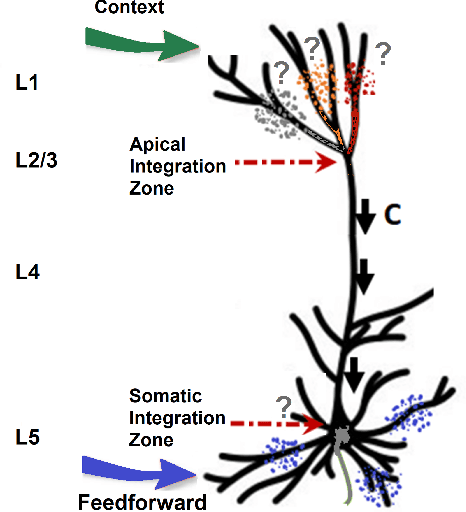
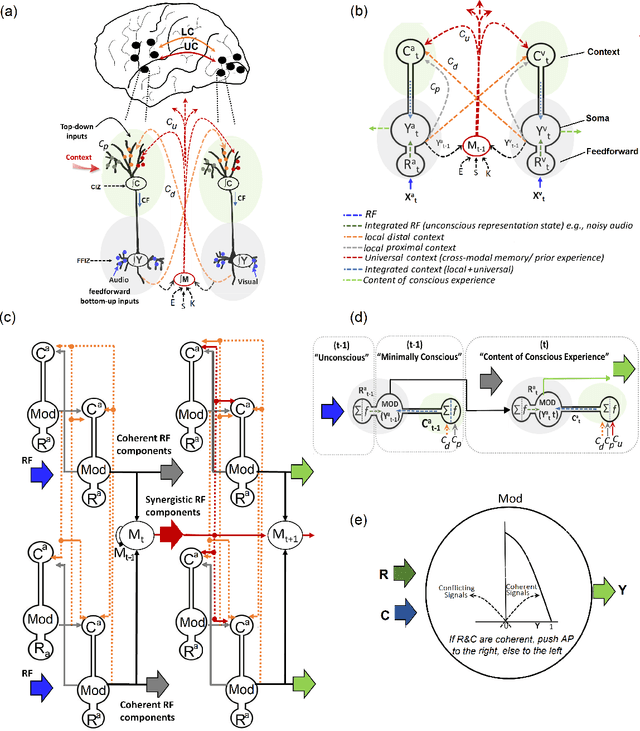
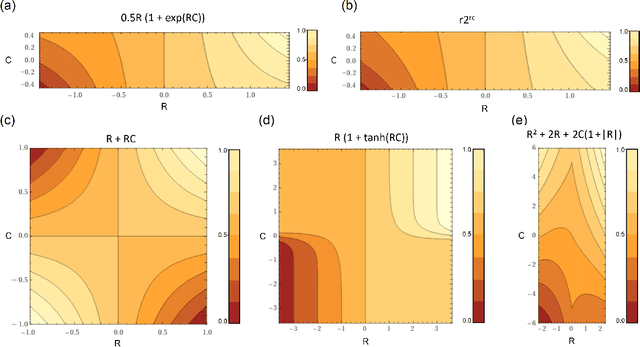
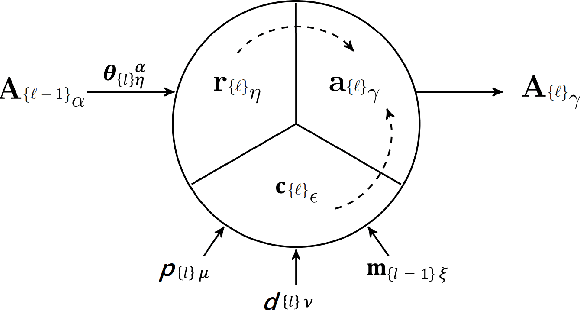
Abstract:There is ample neurobiological evidence that context-sensitive neocortical neurons use their apical inputs as context to amplify the transmission of coherent feedforward (FF) inputs. However, it has not been demonstrated until now how this known mechanism can provide useful neural computation. Here we show for the first time that the processing and learning capabilities of this form of neural information processing are well-matched to the abilities of mammalian neocortex. Specifically, we show that a network composed of such local processors restricts the transmission of conflicting information to higher levels and greatly reduces the amount of activity required to process large amounts of heterogeneous real-world data e.g., when processing audiovisual speech, these local processors use seen lip movements to selectively amplify FF transmission of the auditory information that those movements generate and vice versa. As this mechanism is shown to be far more effective and efficient than the best available forms of deep neural nets, it offers a step-change in understanding the brain's mysterious energy-saving mechanism and inspires advances in designing enhanced forms of biologically plausible machine learning algorithms.
 Add to Chrome
Add to Chrome Add to Firefox
Add to Firefox Add to Edge
Add to Edge